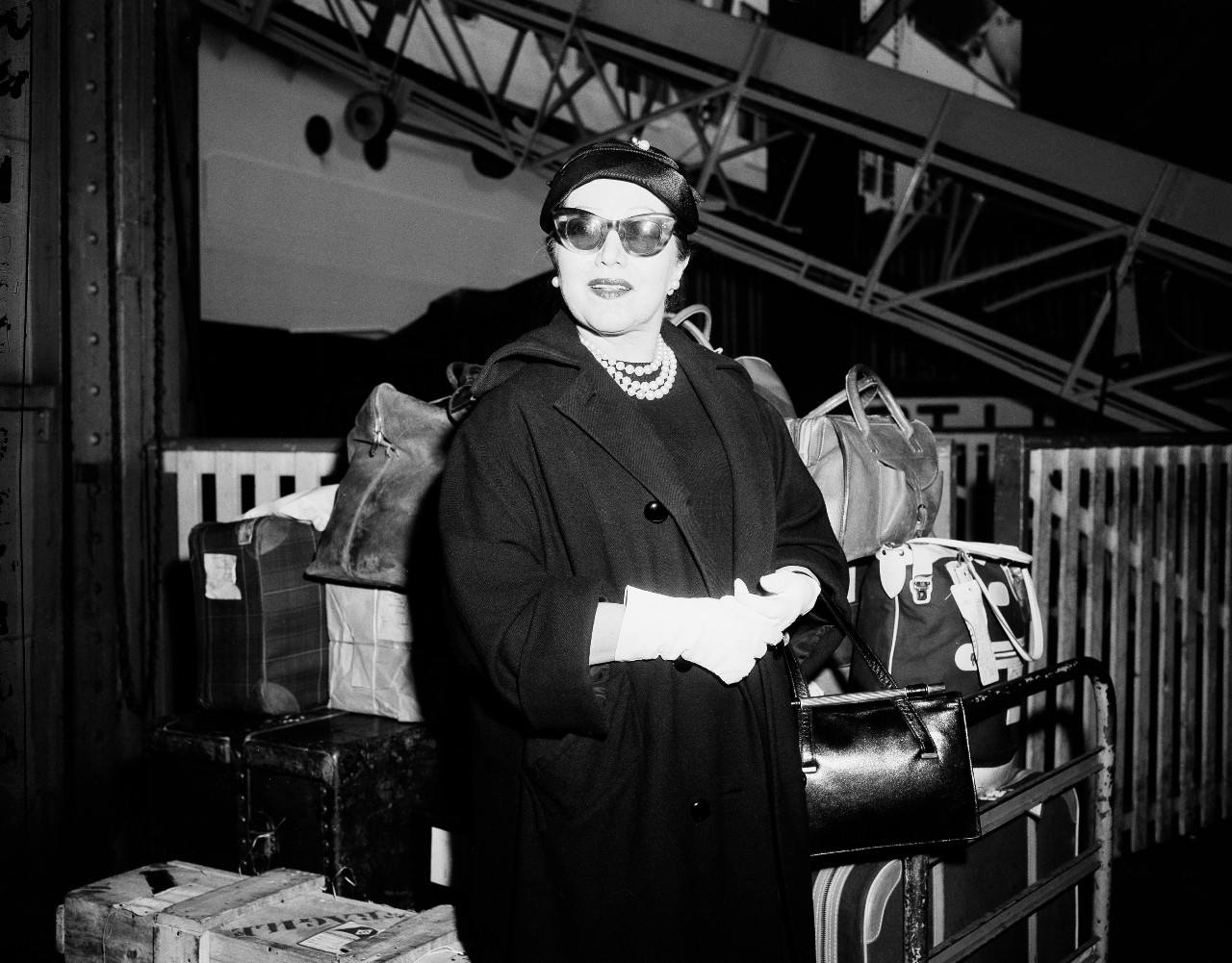The wedding of Florence Lacaze, born in San Francisco in 1895, and Frank Jay Gould, born in New York in 1877, was celebrated in Paris on February 10, 1923. Aged 27 and 45 respectively, this was not the newlyweds’ first rodeo. Florence, who owed her name to her French parents living in California, had first married Henry C. Heynemann, a childhood friend from San Francisco, in October 1914. Perhaps the bride disliked her wedding night spent admiring ancient stained-glass windows in a cathedral? Or maybe she was disappointed to discover that her new beau was not nearly as wealthy as she had imagined? Either way, their happily-ever-after failed to even make it past the honeymoon period. In 1916, Florence moved to Paris, where her recently widowed mother was living on a modest pension.
With her Hollywood smile, light-brown hair, blue eyes, and perfect figure, Florence felt she was destined for a brilliant future. All she had to do was get herself noticed. Without wasting any time, she took up dance and singing classes, and her career in the Parisian music halls began. The young woman drew a crowd of admirers among whom she was able to perfect her seductive talents, but amateur heirs and bourgeois boys interested her little. Then, one day, the youngest son of Jay Gould, the American railroad baron, came to see Mademoiselle Lacaze at the Folies Bergère cabaret… What on earth was Frank Jay Gould doing in such a place?
The son of the man nicknamed “the financial vampire” had actually been living in France since 1910. His father’s death had made him one of the world’s richest heirs and, just like his brothers, Frank had a passion for actresses. In fact, when he met Florence in 1918, Frank Gould was still with English actress Edith Kelly, his second wife. Unperturbed, Florence knew enough about love to take the competition in her stride. And so, after a terrible divorce that had the French and American press in raptures for months, Frank was freed from his chains and Florence officially became the billionaire’s third wife.
Luxury, Peace, and Pleasure
What is there to do for someone who has everything? Nothing! Or rather, while away time as if nothing matters. “To hold on to your man, you need to occupy him,” Florence later said. “You make love together for, what? An hour? Maybe only half an hour? Then you have 23 other hours to fill.” Much like a geisha, the young woman knew all the tricks for keeping Frank Gould entertained. She was so successful that he even stopped drinking – his favorite hobby at the time. Florence’s unbridled energy ended up rubbing off on her husband, who decided to return to public life. He adored watching his wife delight in playing baccarat – and losing unprecedented sums of money – playing tennis, swimming, horseback-riding, sailing, and even driving cars from 1925 onwards.




Having grown bored of Granville in Normandy, where Frank had built a casino and a palace hotel in 1911, and tired of the chaos of Nice, the couple fell in love with Juan-les-Pins, a quiet coastal village west of Cap d’Antibes. They bought La Vigie, a neo-Gothic villa, where they hosted guests such as the Fitzgeralds, Cole Porter, Douglas Fairbanks, Charlie Chaplin, and the Aga Khan. Above all, they built Le Provençal, a luxurious Art-Deco hotel which later became one of the most popular establishments on the French Riviera. When the Goulds’ doctors advised them to take a course of treatment at Bagnoles-de-l’Orne, a dilapidated resort in the Normandy countryside, the couple accepted under certain conditions: The Grand Hôtel had to be renovated, its parks landscaped, the hideous pond replaced with a lake, and a casino built as soon as possible. Within six months, the entire town had been transformed.
This real-estate frenzy kept Florence and her husband busy for at least a decade, and their finest work from the time is the Palais de la Méditerranée in Nice. Soon after, Frank returned to his old habits, picked up the bottle, and engaged in countless affairs. “In the 1930s, everybody slept with everybody else,” said Florence Gould. “It was fun.” Frank Gould’s young, sensual, fierce third wife took full advantage of this freedom. Men fell at her feet, starting with the instructor who taught her water-skiing – a sport she brought to France. But the war put an end to this period of euphoria, forcing the Goulds to choose between returning to America and staying in France. In the end, they decided to stay.
After the Storm
At the end of German occupation, in August 1944, those who had fled Paris returned and were astonished to find Florence heading up Parisian society life. During the 1930s, the Goulds were generally scorned by the intellectual elite, but now Florence was hosting her own so-called literary salons! The Thursday lunches she held in her apartment on Avenue de Malakoff, then at the Hôtel Meurice in the 1950s, were increasingly successful. Certain established names such as Paul Morand were among the regular guests, while young writers looking for a sponsor competed to catch her attention.
Frank Gould was holed up in Juan-les-Pins, never to leave, and absent-mindedly observed this ambition, which continued until 1980. But what drew so many young people to these lunches? Certainly not the conversation, the love of books, or the kindness of their hostess. Florence would stare daggers at any profound statements or overly serious observations. As for novels and poetry collections, and despite financing several literary prizes, she hardly read and preferred sharing lewd stories and shocking her guests with risqué jokes. “We only put up with you because you’re a billionaire,” said philosopher and writer Emil Cioran after losing his patience with her. It was Florence’s absence of any moderation that was most fascinating, more than her three-tiered pearl necklace, her yacht, or her villas. She was capable of extreme lavishness and the most baffling stinginess. The year she purchased a fabulous emerald necklace and Van Gogh’s Wheatfield with Crows for millions of dollars, she also removed the cheese boards from her receptions in an effort to “save money.”
What cold-blooded creature was really hiding behind the thick-rimmed black glasses that she refused to take off? And why, after her husband died in 1956, was she never seen without a glass of Champagne? “Madame drinks to forget what she did during the war,” one of her housekeepers once confessed to a few close friends. Florence’s secret was so well kept that no one discovered it until she died on February 18, 1983, at Le Patio, her residence in Cannes. A CIA report from 1945, which was declassified after her death, revealed the details of how Florence Gould had worked diligently for the German secret services during World War II. Accompanied by her lover, a young S.S. agent by the name of Ludwig Vogel, she used a fake name to make several trips to Berlin. She also had an affair with Otto Abetz, an ambassador for the Third Reich in Paris, and developed a luxury prostitution network to entertain German officers. The last words ever heard from Florence Gould were: “I would give anything for someone to take it all out of my head.”
A Dangerous Woman: American Beauty, Noted Philanthropist, Nazi Collaborator – The Life of Florence Gould by Susan Ronald, St. Martin’s Griffin, 2019.
Article published in the July 2022 issue of France-Amérique. Subscribe to the magazine.












